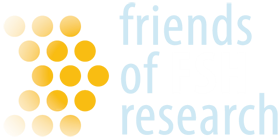Investigators: Lauren G Brown, Ashleigh Theberge PhD, Stephen Tapscott MD PhD
Category: Research - Basic
Mentor: Ashleigh Theberge
Co-Mentor: Stephen J Tapscott
Total proposal: $141,856
While many 2D in vitro cellular models have been established to study the transcriptomic and proteomic profile of FSHD, there currently is no established 3D in vitro FSHD tissue model. As such, generating a functional, physiologically relevant skeletal muscle tissue model that can be used to study FSHD pathogenesis and treatment is an important area of focus. An ideal 3D in vitro model for recapitulating FSHD skeletal muscle tissue environment would include two aspects: (1) mechanical and/or electrical cues to align skeletal muscle cells properly in vitro and (2) recapitulation of the interaction between healthy and diseased skeletal muscle myofibers at interfacial regions for studying DUX4 mediated toxicity and spreading events.
Recently, we have developed a suspended tissue open microfluidic patterning (STOMP) platform that uses capillary pinning to pattern multiple distinct regions comprised of various cell or ECM compositions within a single tissue construct. By spatially patterning healthy adjacent to FSHD diseased cells, we will generate mixed myotubes with a known region of FSHD-diseased nuclei that can be used to monitor target gene activation in adjacent healthy myonuclei over the culture length. Additionally, we can better observe functional myotube characteristics (i.e., myotube length, morphology) at the healthy-diseased interface. In this proposal, I will utilize STOMP to generate a 3D in vitro FSHD model with a spatially patterned healthy and diseased border region (Aim 1). Then, I will test the efficacy of a 3D model to suppress DUX4 expression in long-term cultures in response to clinically tested p38 inhibitors in 2D short-term cultures (Aim 2). Ultimately, we aim to create a physiologically relevant FSHD tissue model that can be used in preclinical therapeutic drug testing. Furthermore, this project will provide a dynamic 3D model that can be used to not only study FSHD, but also other skeletal muscle dystrophies for studying disease progression and therapeutic interventions.
Related Material
Publication Suspended Tissue Open Microfluidic Patterning (STOMP)
News Article 3D-printed device advances human tissue modeling








Connect with us on social media